Prehistory 1904 – 1923
The Regius professorship of Natural History at Glasgow was founded in 1807 by King George III to provide a curator for William Hunter’s collection which had been bequeathed to the University in the late 18th century. Natural History at Glasgow comprised zoology and geology; botany, historically the third component of this discipline, had been allied to Medicine since 1702. In the 19th century the professors in natural history were mostly concerned with geology or other duties. Though comparative anatomy was taught, John Graham Kerr’s appointment to the chair in 1902 brought the first zoologist in a modern sense to the role. By then the Darwinian revolution had transformed and energised thinking in natural history. Geology was given a separate chair in 1903, and thereafter Graham Kerr’s title was Regius Professor of Zoology. His role encompassed teaching, research, museum management, administration, and public affairs.
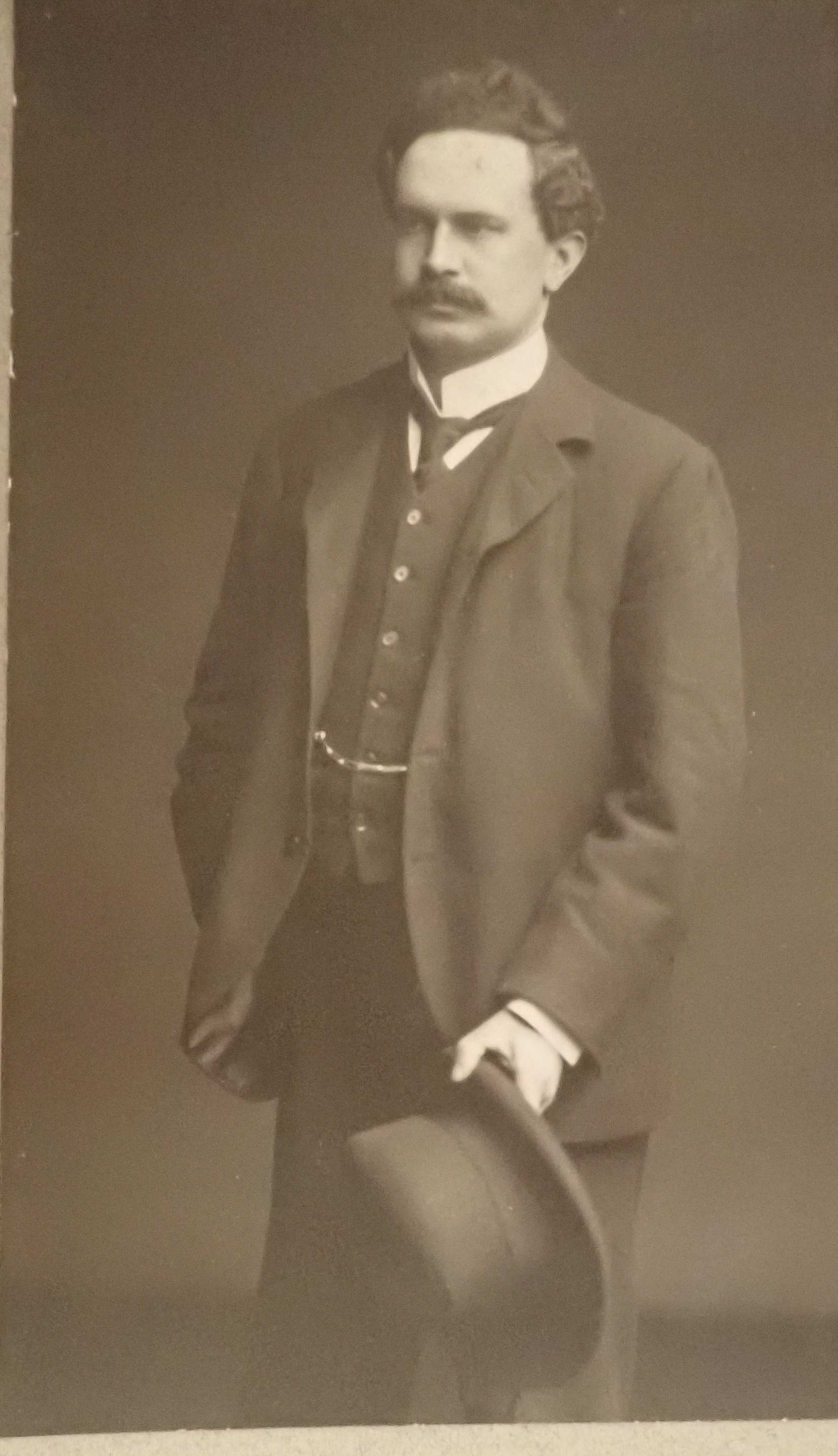
John Graham Kerr, aged 33, on his appointment to the Regius professorship at Glasgow.
Photo by T. Annan. ©University of Glasgow
On his arrival in Glasgow, Graham Kerr found he had inherited a dilapidated department with poor facilities and few staff on the eastern ground floor and basements beneath the Hunterian Museum in the main Gilbert Scott building.
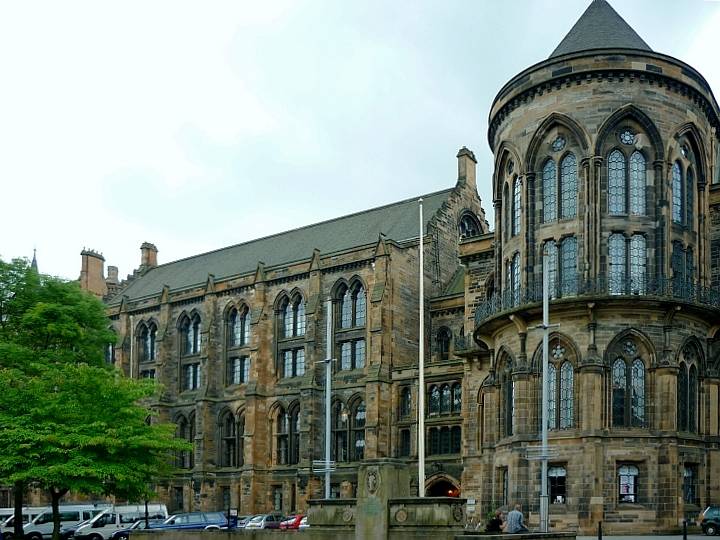
The north-east front of the Gilbert Scott Building.
Photo by Jacqueline Banerjee. (Link)
He was a keen proponent of the museum and collections in teaching and in his curatorial capacity made good use of the adjacent access to the Hunterian Museum’s zoology material.
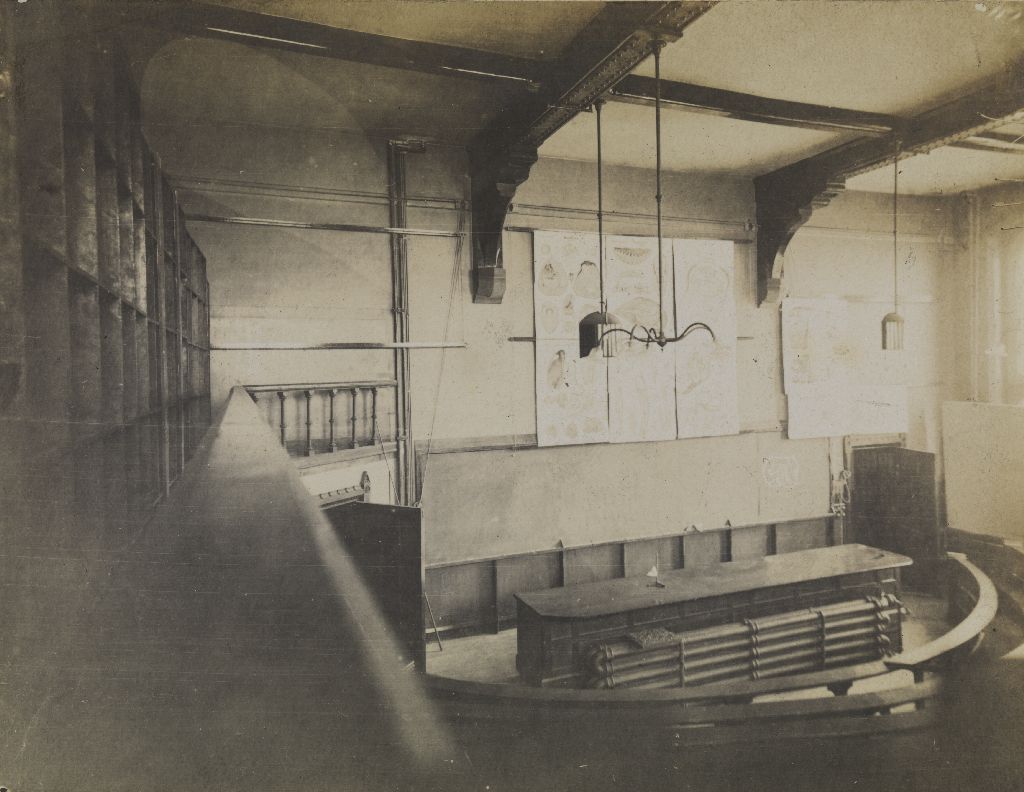
The old Zoology lecture theatre in the Gilbert Scott building – empty.
Credit: ©University of Glasgow
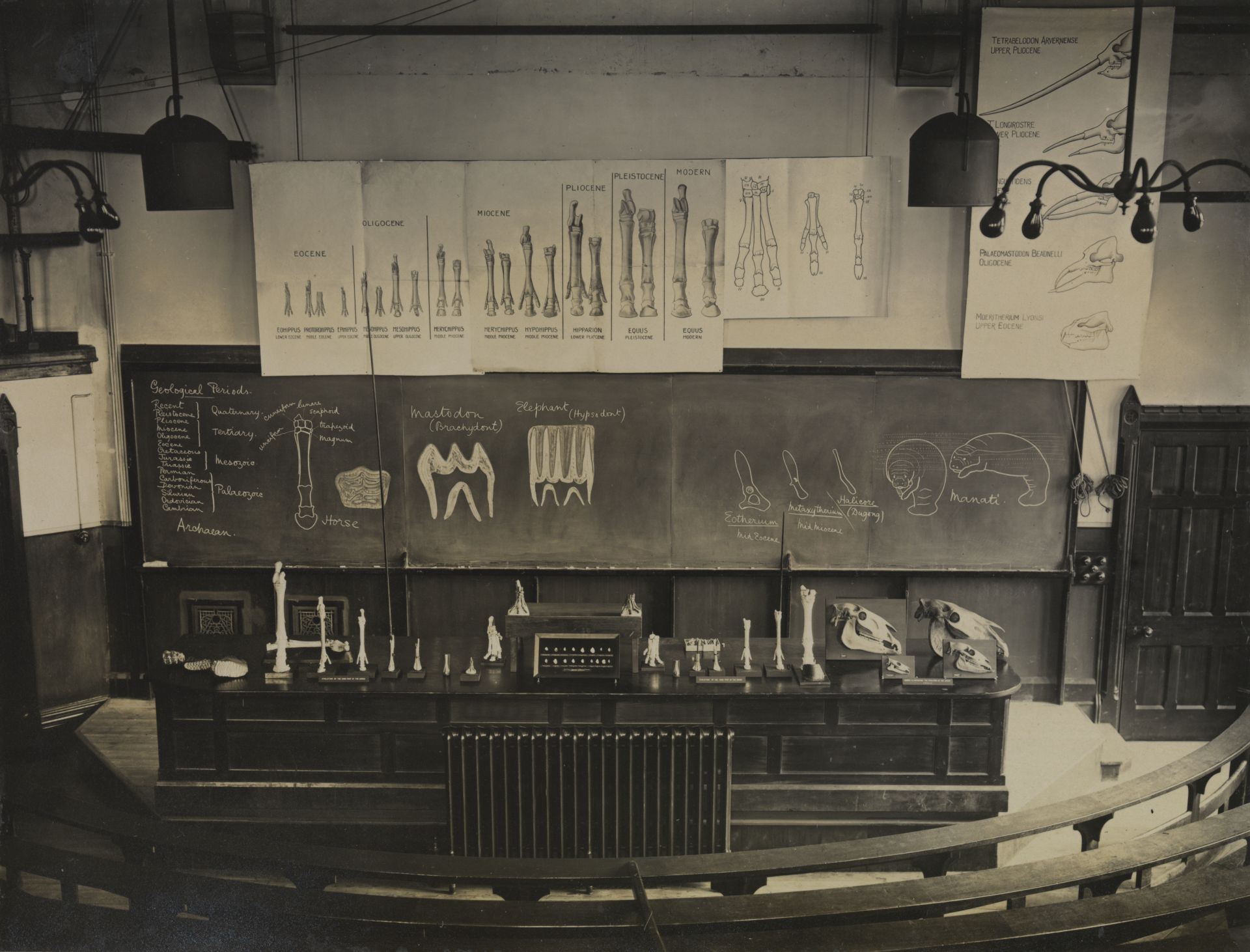
The old Zoology lecture theatre set up for teaching (on the topic of evolution in mammals) with museum specimens, teaching charts and blackboard text and drawings.
Credit: ©University of Glasgow
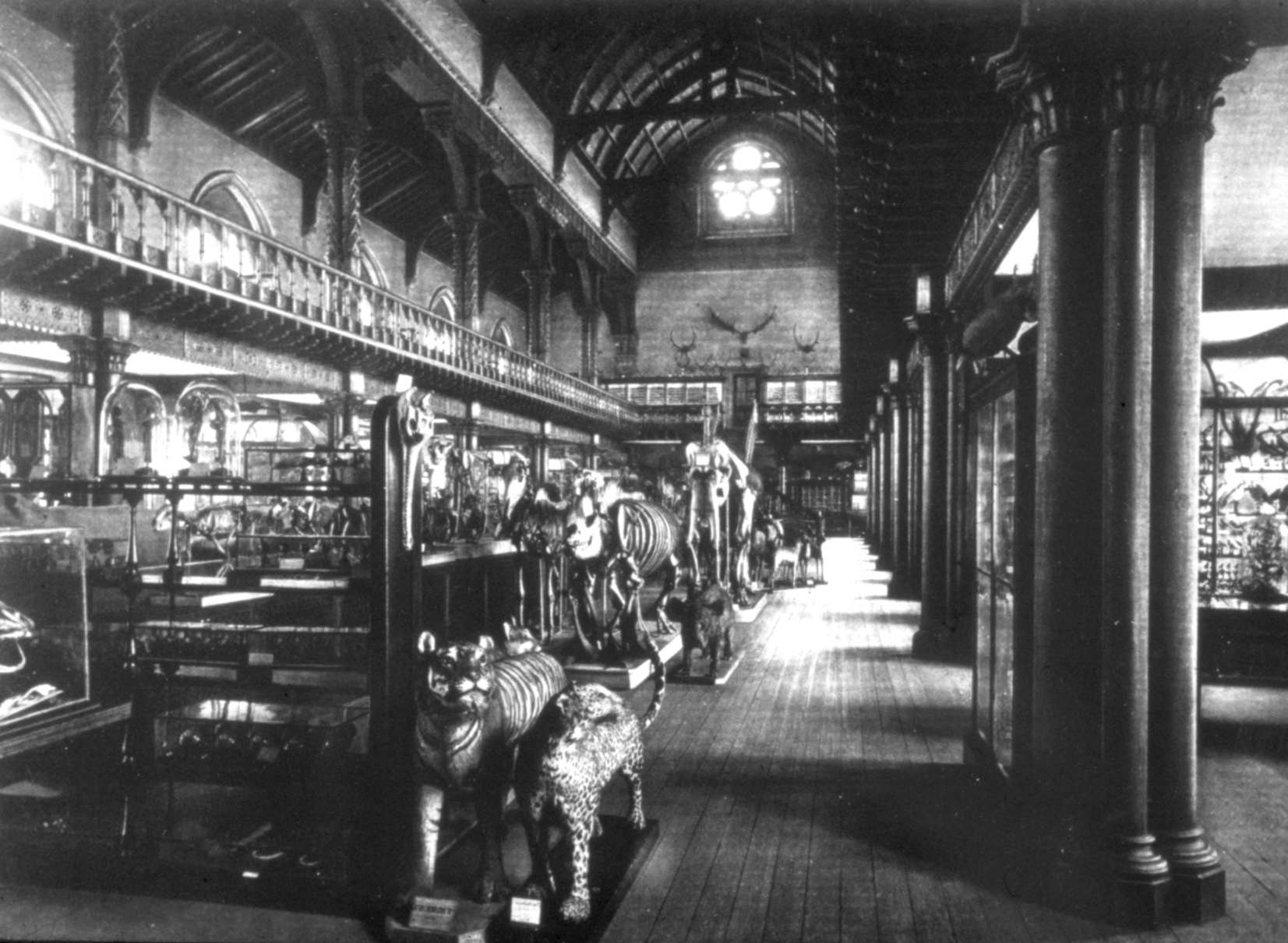
The Hunterian Museum in the Gilbert Scott building, showing the Zoology collections in the 1890s
Credit: ©University of Glasgow
From 1903, Graham Kerr set out on a mission, working with the University authorities to have built a new state-of-the-art Zoology Department well provisioned for the flourishing science of Zoology in the 20th century. He had gained agreement on this by 1914 but the outbreak of the WW1 delayed works until 1921. John James Burnet was appointed architect and the building opened in 1923, 20 years after Graham Kerr’s appointment.
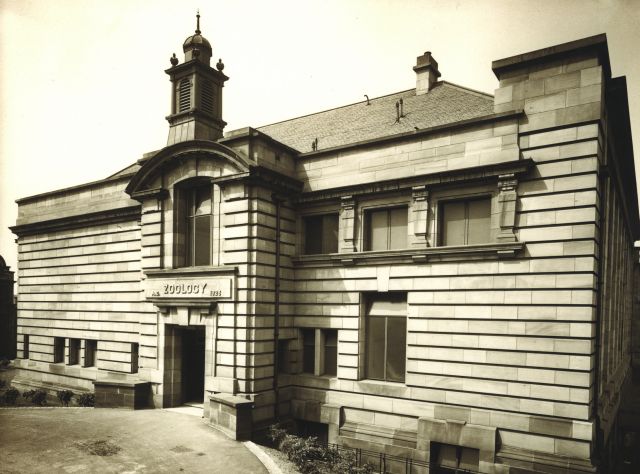
The main entrance and frontage of the Graham Kerr Building.
Photo by T. Annan. ©University of Glasgow
Teaching was a large part of Graham Kerr duties and he devoted significant and serious attention to it, including appointing staff who shared his enthusiasm. Initially almost all of his teaching was to large classes of medical students (numbers were around 250 per class). Natural sciences of Zoology and Botany were included in the medical curriculum at that time. Only six students took pure zoology between 1910 and 1924, though the numbers increased thereafter.
Graham Kerr’s main scientific research was on the morphology and evolution the lower vertebrates, particularly lungfish and related archaic taxa. He was also interested in the medical aspects of zoology, particularly Protozoology, marine biology, and in animal camouflage, bringing his knowledge of the latter to bear on advice to the British government in respect of wartime camouflage of military installations and ships. The staff recruited in his tenure also had or developed research interests in evolution, embryology, biology of protozoa, aquatic biology and adaptive behaviour. He was a keen proponent of field work but not an experimental zoologist – an approach rapidly developing in the through the middle of the 20th century.
To assist Graham Kerr in research and teaching, there were few staff in the early days of the Department, some described below. However, a caveat – of course this is a partial account as not all staff, especially temporary or short term appointees or technical and support staff were recorded and there are those whose for whom only names are known but no further information has been discovered to date.
Regius Chairs in Natural History, then Zoology:
- Lockhart Muirhead MA LLD (1807)
- William Couper MA MD (1829)
- Henry Darwin Rogers MA LLD (1857)
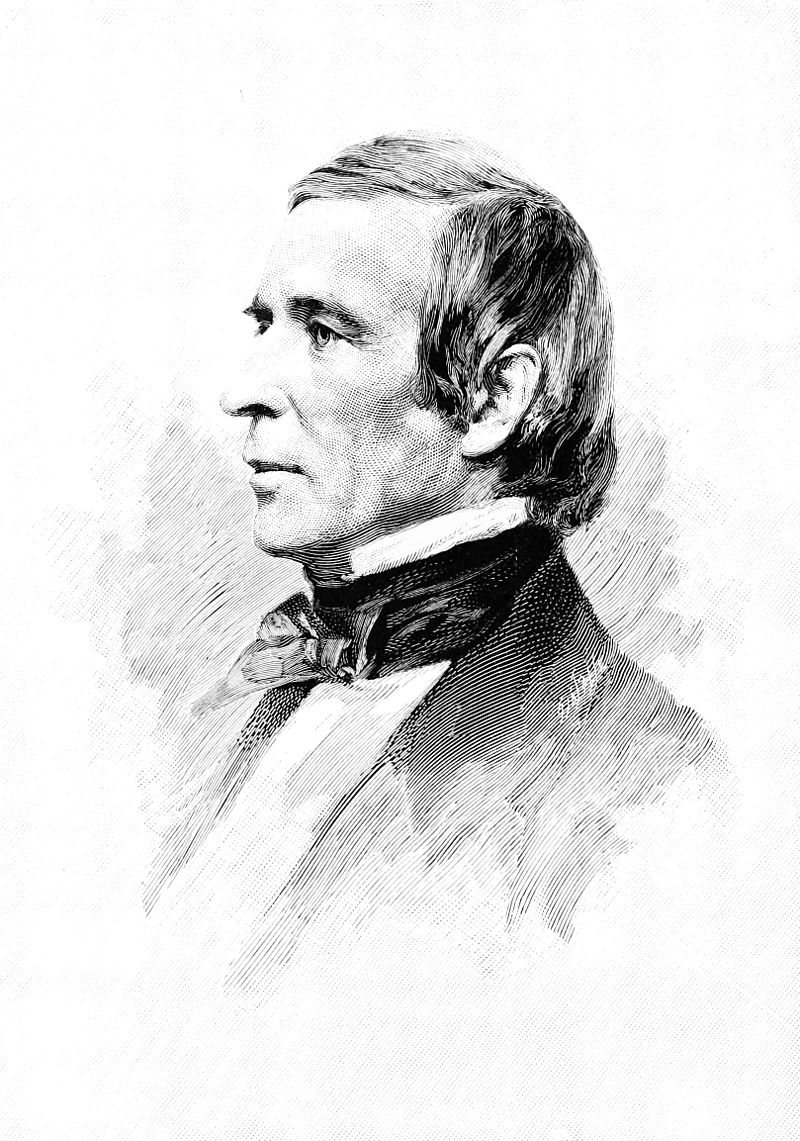
Source: Popular Science Monthly Volume 50
- John Young MD (1866)
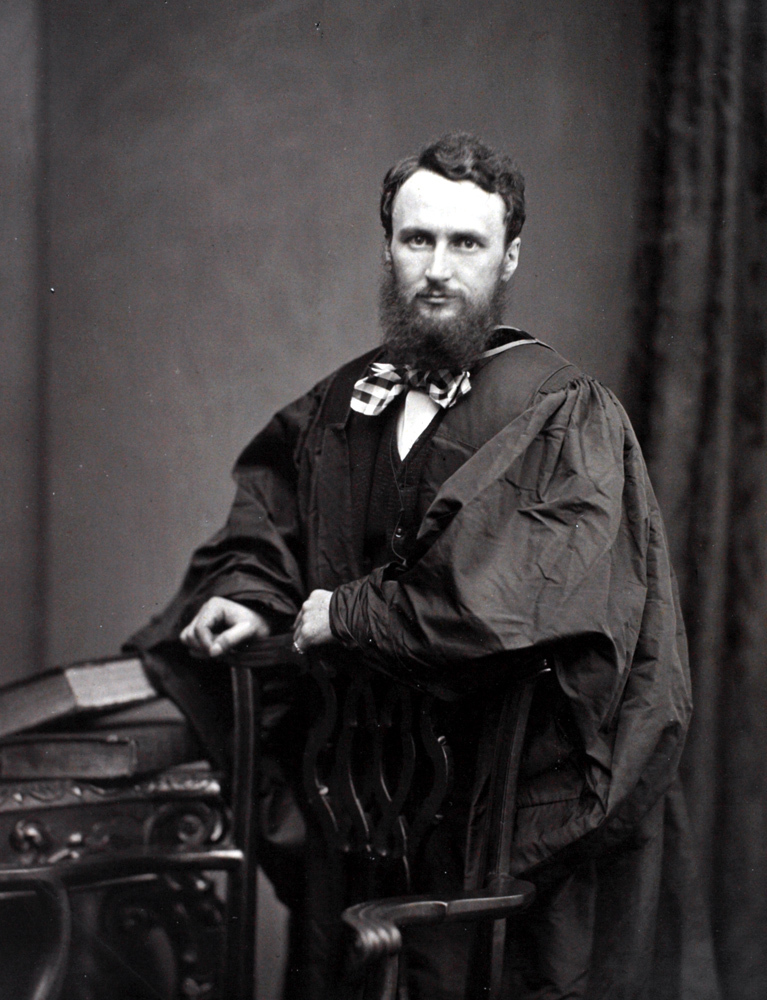
Credit: ©University of Glasgow
- Sir John Graham Kerr MA LLD FRS (August 1902)
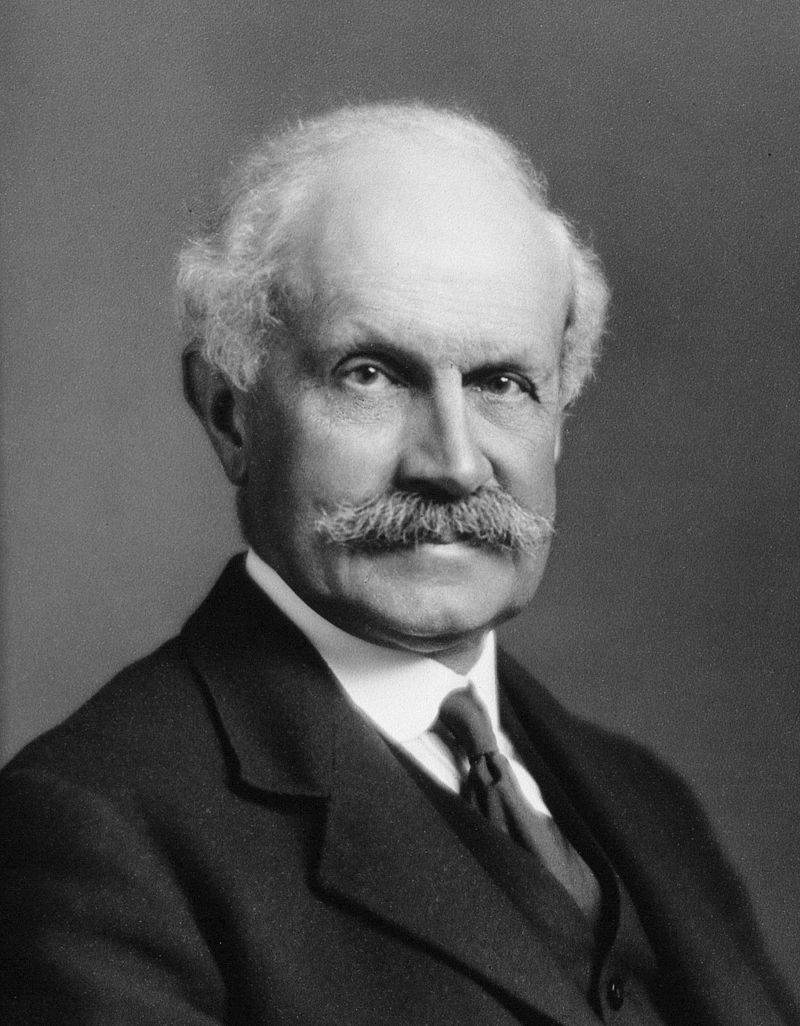
Credit: ©University of Glasgow
- Edward Hindle MA PhD ScD FRS (1935)
- Charles Maurice Yonge CBE PhD DSc FRS (1944)
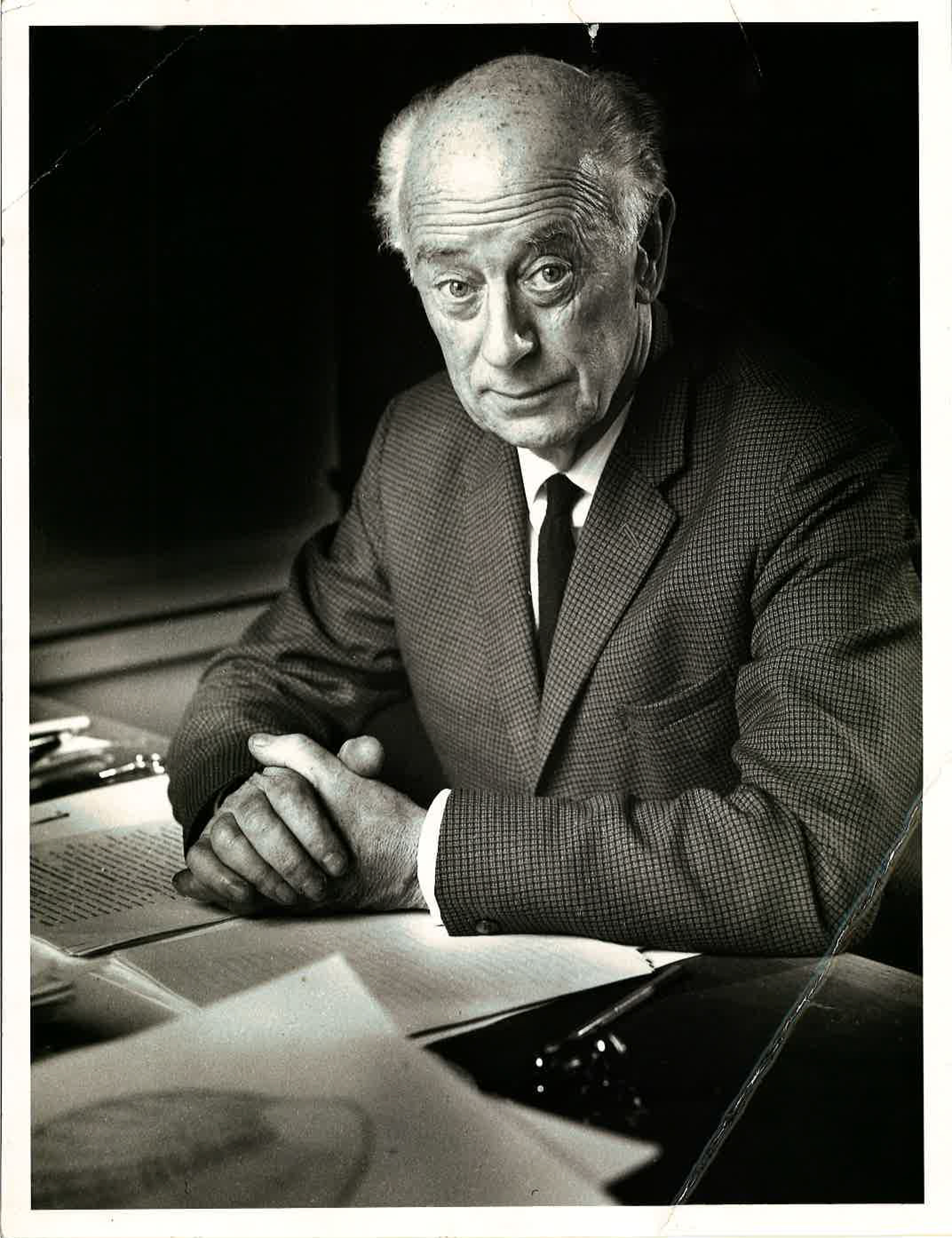
Credit: ©University of Glasgow
- David Richmond Newth BSc PhD (1965)
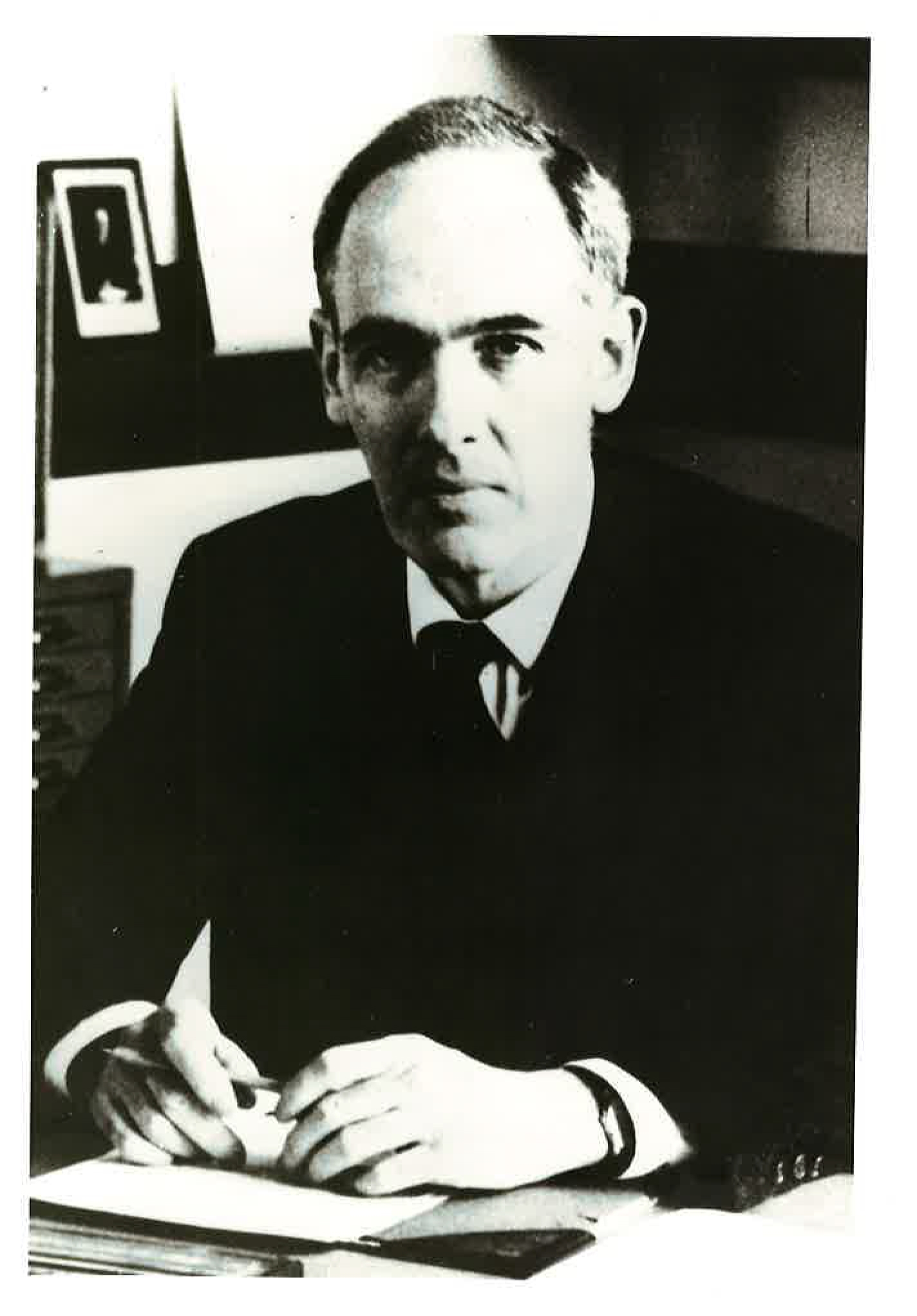
Credit: ©University of Glasgow
- Keith Vickerman PhD DSc FRSE FRS (1984-1998)

Credit: ©University of Glasgow
- 1998 - 2013 vacant
- Pat Monaghan FRS FRSE MAE PhD (2013 - Present)
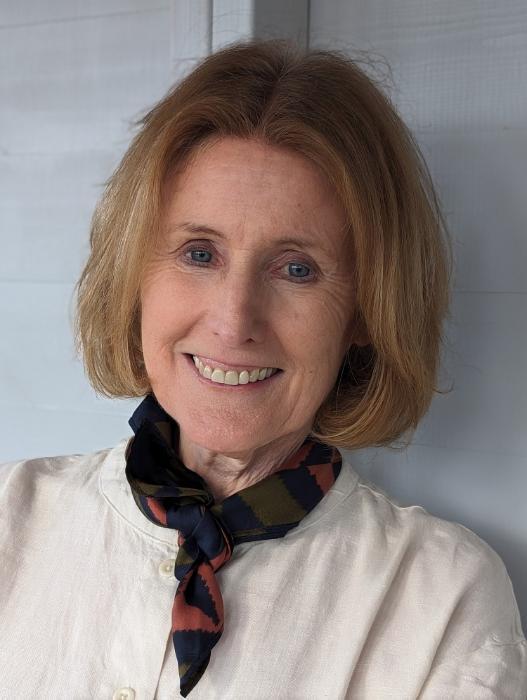
Credit: ©University of Glasgow
Edward Bles D.Sc. FRSE (1864 – 1926)
Edward Bles had been a student at Owens College (later part of the University of Manchester) where he published research work on the development of amphibians. He moved to the University of Cambridge in 1896 where he met Graham Kerr and when the latter took up his professorship in Glasgow , Bles moved with him as his senior assistant (today ‘s equivalent would be senior lecturer). Bles continued his research on frogs at Glasgow specialising in the biology of the African smooth clawed toad, Xenopus laevis. This animal subsequently became a key organism for the study of developmental biology and also of medical importance in that, until the advent of modern immunological testing, it was used as a human pregnancy test – the frog spawns on exposure to the hormone human chorionic gonadotropin, present in the urine of pregnant women. During his time in Glasgow, Bles established a reliable method of spawning and breeding the frog in captivity. Bles worked in Glasgow till 1907, then left academia to devote himself to private research on protozoa. He died suddenly in 1926.
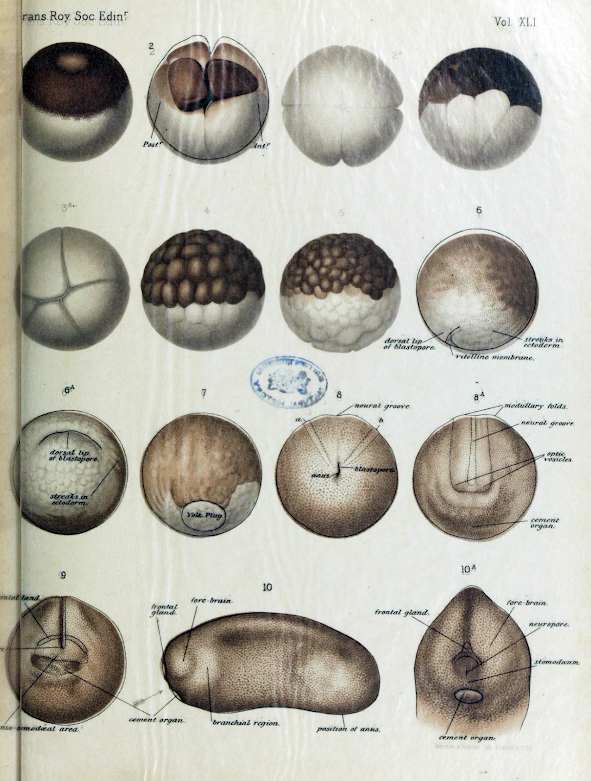
A. Kirkpatrick Maxwell’s fine illustration of egg development for the publication, Bles. E.J. 1905. The life-history of Xenopus laevis Daud. Transactions of the Royal Society of Edinburgh 41, 789-821. (Link)
Robert Arnot Staig M.A. Ph.D. (1876 – 1963)
Robert Staig first started working in the Zoology Department in 1903 teaching science and public health students. He was appointed to a lectureship in 1923 as curator for the rapidly growing Entomology collections; he gained an honorary M.A. in 1924. In 1923, the Zoology Department had received the donation of Thomas G. Bishop’s enormous collection of beetles which required expert care and study. In addition, on his arrival in Glasgow, Graham Kerr had found William Hunter’s insect collection, one of the most important 18th century collections still extant, in poor condition and requiring attention. Covering selected families of beetles, Staig produced two illustrated volumes on the Hunter collection – ‘The Fabrician Types of Insects in the Hunterian Collection’ 1931 Volume 1: Coleoptera I, 1940 Volume 2: Coleoptera II; he was awarded a Ph.D. in 1933 on the basis of the work in the first volume. Other publications included a general textbook on Zoology and he contributed the entomology section to a 1936 Manual of Public Health by J. R. Currie. Staig also assisted Graham Kerr in the development of the Zoology Museum producing beautiful exhibits on camouflage and mimicry in insects. He retired in 1940.
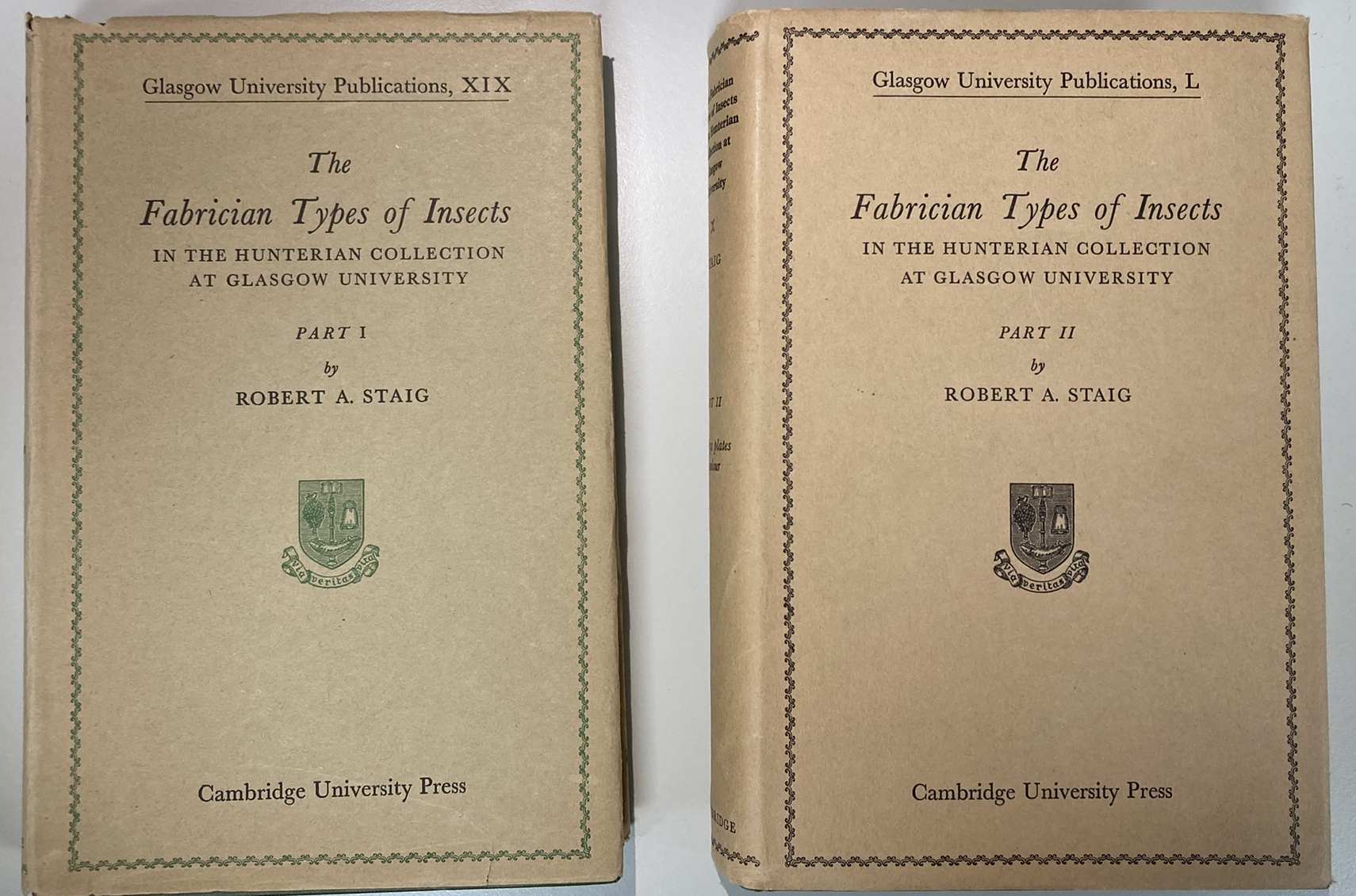
Robert. A Staig’s 2 volumes, published by Cambridge University Press, on some families of the Fabrician Types of beetles in William Hunter’s collection.
Credit: ©University of Glasgow
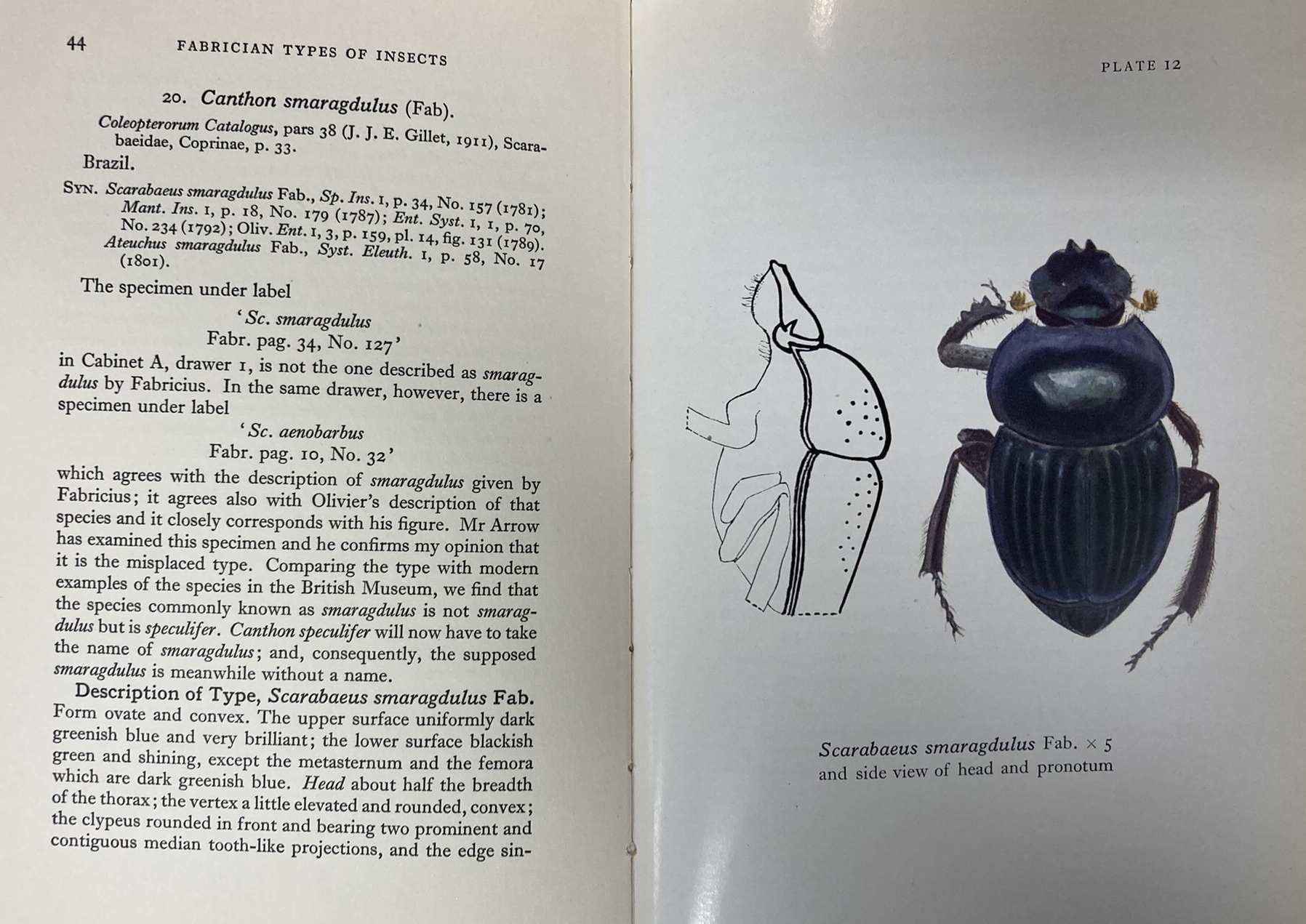
Text page and illustration from the books showing Margaret Wilson’s realistic illustration of the beetle Scarabeus smaragdulus and the curatorial research to establish its provenance.
Credit: ©University of Glasgow
Wilfred Eade Agar FRS OBE (1882 - 1951)
Agar joined the Department in Glasgow in 1904 as a demonstrator. As well as teaching, at Graham Kerr’s suggestion, he took up a study of the development of the cranial anatomy of lungfish utilising the embryological specimens of Lepidosiren, collected by Graham Kerr on his expeditions to the Paraguayan Chaco a few years before. In his studies he noted that Lepidosiren had unusually large cells that lent themselves well to the emerging studies on chromosomes and their behaviour in reproduction. In 1907, Agar went to the Chaco in search of further lungfish specimens suitable for cytological studies. In 1914, the culmination of several years work, he published important papers describing cellular mechanisms in spermatogenesis. Whilst at Glasgow he also carried out detailed research refuting ideas on Lamarkian inheritance. In World War One, Agar served with the 5th Highland Light Infantry at Gallipoli. In 1919, he left Scotland to take up the Chair of Zoology at the University of Melbourne.
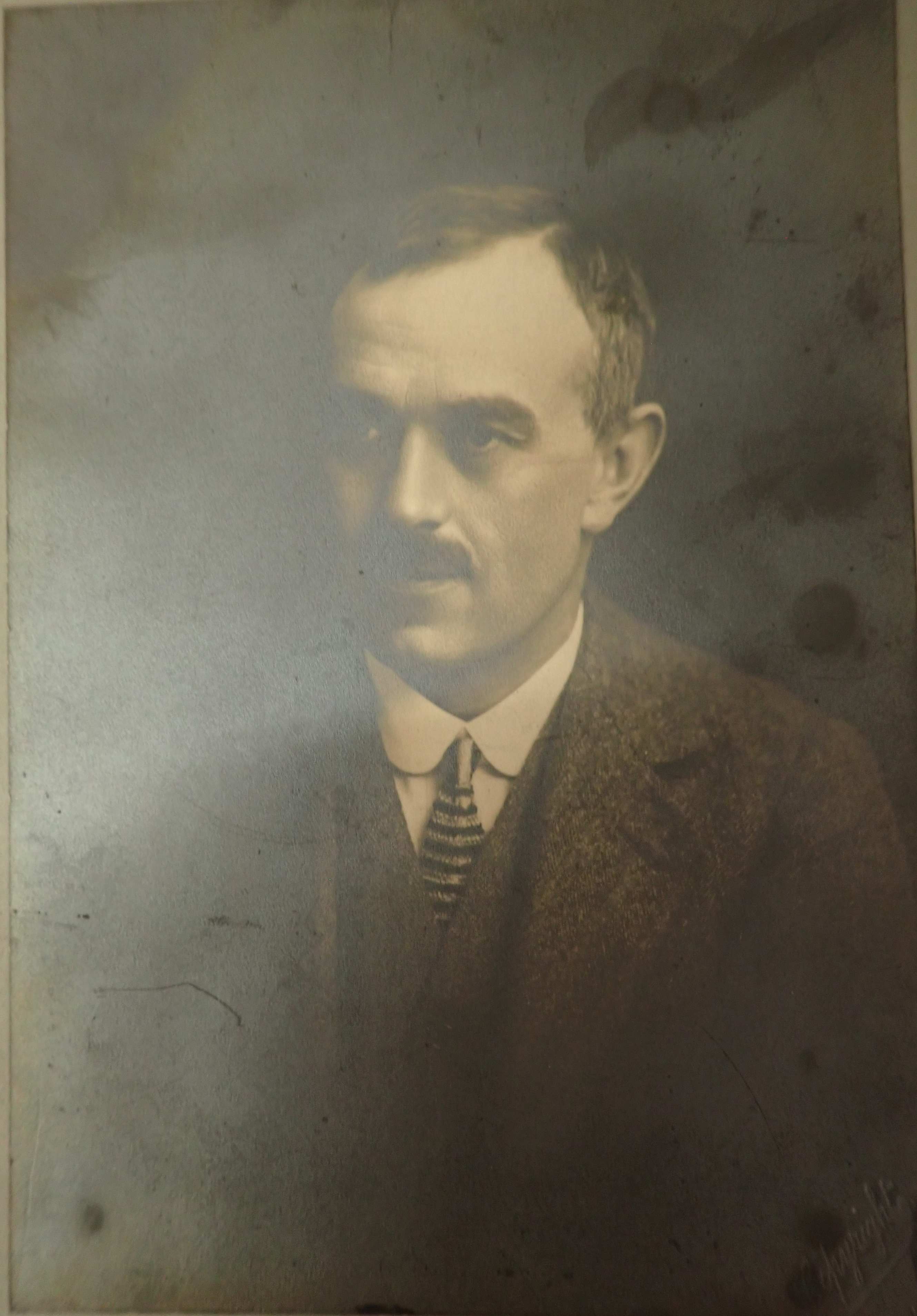
Wilfred Eade Agar, lecturer in Zoology 1904 - 1919
Credit: ©University of Glasgow

Vermillion flycatcher collected by Agar at Makthlawaiya, Gran Chaco in 1907
Credit: ©University of Glasgow
Charles Herbert George Martin B.A., M.A., FZA ( 1881 – 1915)
C.H. Martin was employed by Graham Kerr in 1907 as an assistant to teach the large medical classes. He was also a keen and capable researcher utilising microscopy to study lower invertebrates and Protozoa and between 1907 and 1914, he published 18 papers in scientific journals. He was adjudged to have a distinguished career ahead of him. He left Glasgow in 1911 for family reasons and in 1915 was killed at Ypres during World War One.
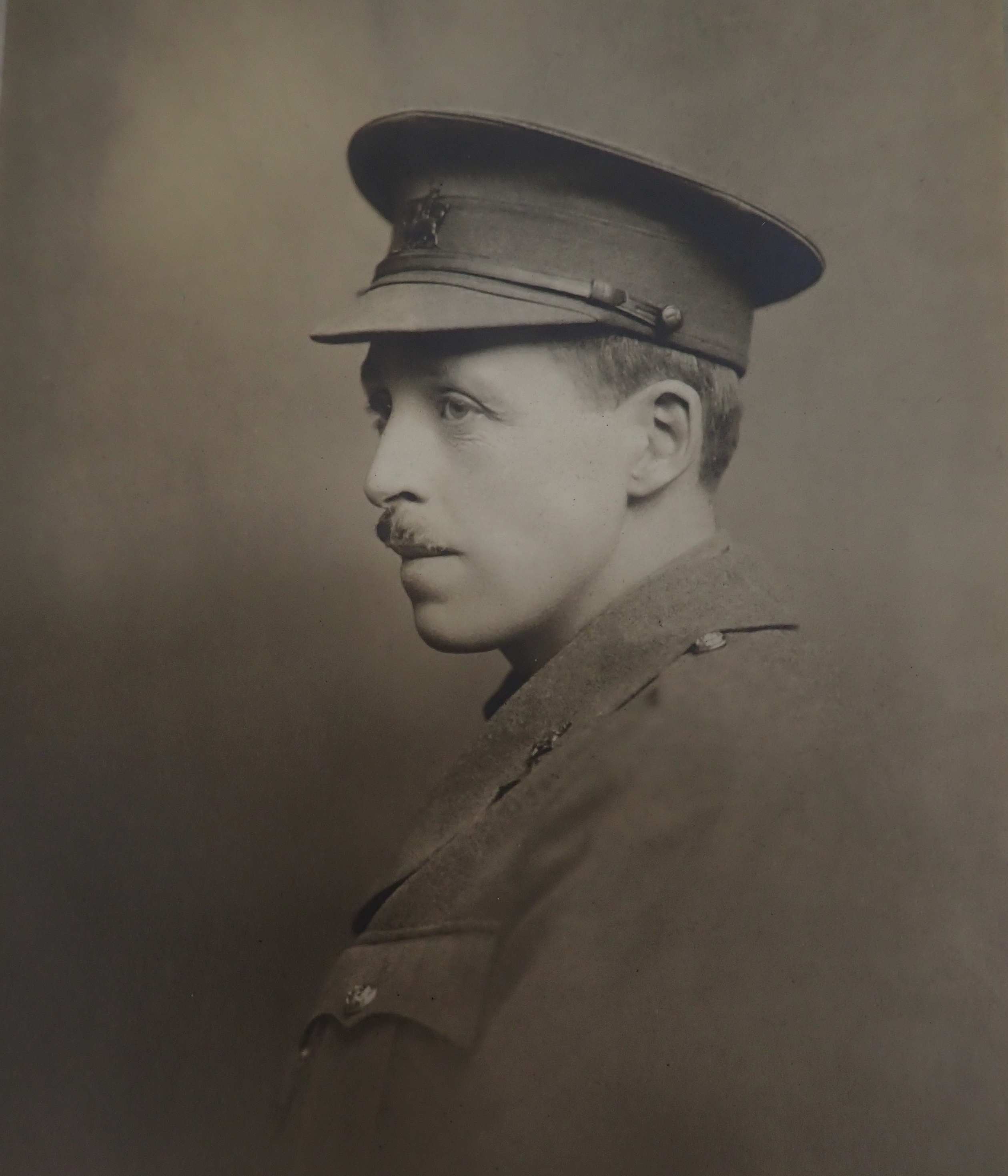
Charles Herbert George Martin, lecturer in Zoology 1907 -1911
Credit: ©University of Glasgow
James Chumley Ph.D. (1886 – 1948)
James Chumley joined the Department around 1916, initially as a teaching fellow then later becoming lecturer in oceanography. Chumley was associated with the great Challenger expedition of 1872 – 1876 which laid the foundations of the science of oceanography. Sir John Murray was one of the key scientists on the voyage and after the expedition became Director of the Challenger office in Edinburgh, where Chumley eventually became his secretary and senior assistant in the monumental task of managing the collections made on the voyage and arranging the publication of the huge ‘Report on the Scientific Results of the Voyage of HMS Challenger’. Chumley curated the collections, distributed them to specialists for study and edited the 50 volumes of the report – he claimed to be the only person to have read every word of the reports. As well as his teaching duties at Glasgow, Chumley worked on faunistic records for the Clyde Sea Area organising, studying and writing up collections made earlier by Murray as a local supplement to the Challenger material, resulting in the publication in 1918 of the valuable ‘Fauna of the Clyde Sea Area’. Chumley left the Dept in 1936. By 1948 he was probably the last survivor directly associated with the outcomes of that foundation journey in oceanography.
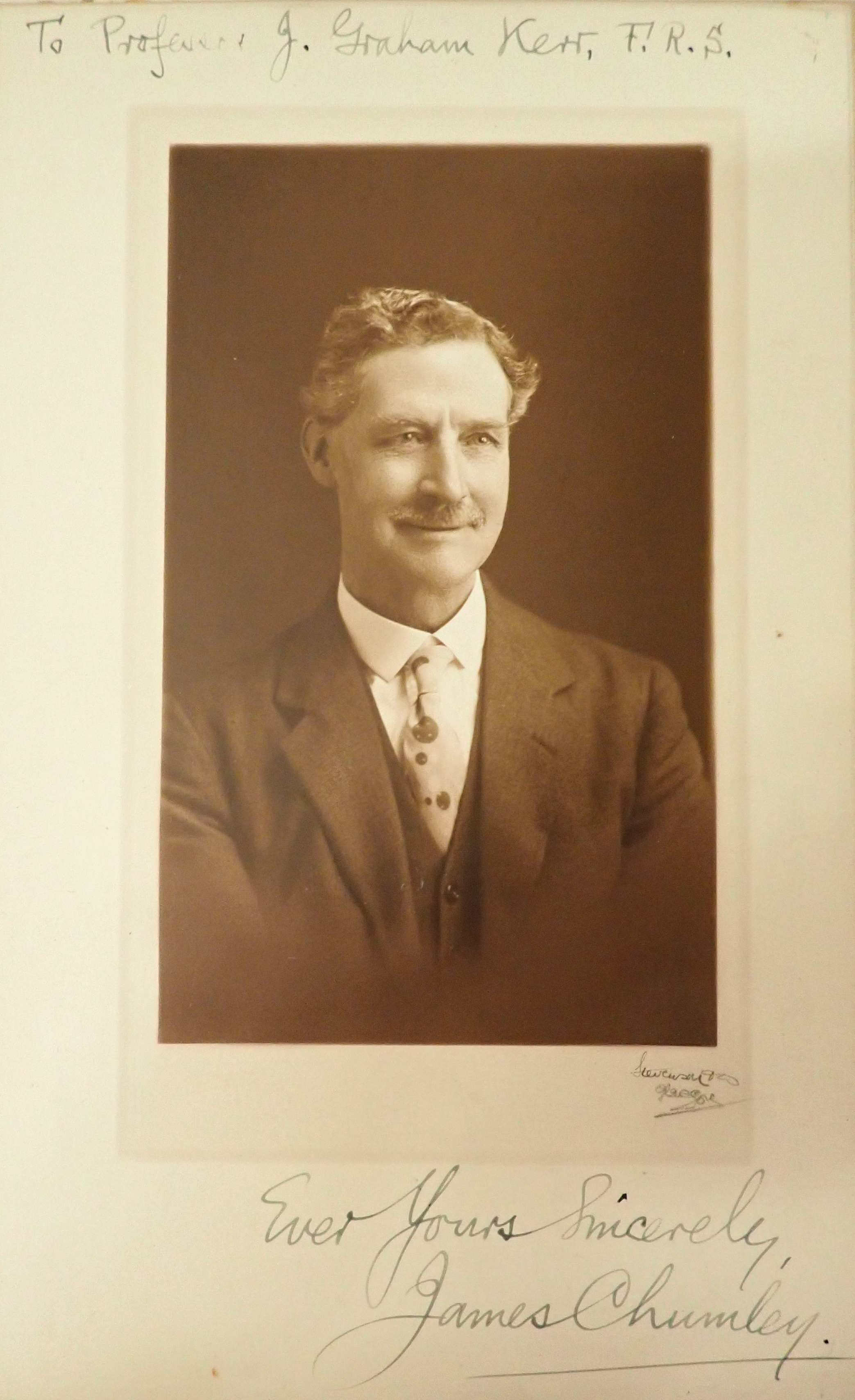
James Chumley, lecturer in Zoology 1916 (?) - 1936
Credit: ©University of Glasgow
Students
Graham Kerr was a vigorous promoter of the education of women, insisting they be taught in the same classes and the same curriculum as men. Amongst the six pure Zoology students in the early days of his tenure, there were three outstanding women Muriel Robertson, Sister Monica Taylor and Sheina Marshall.
Sister Monica Taylor, S.N.D. D.Sc. LL.D (1877 – 1968)
Monica Taylor was a Catholic nun and teacher who came to Glasgow in 1901 to take up a post in Notre Dame School in the west end of the city. She then undertook a degree in Zoology and despite initial difficulties in gaining permission to study at Glasgow University, she eventually attended Graham Kerr’s laboratory classes and subsequently was allowed also to take the lectures. She was a talented student and Graham Kerr suggested she take a higher research degree in addition to her role at the school. She started to work on the fresh-water protozoan Amoeba proteus, a key organism studied in undergraduate practicals. From samples collected in the wild, she cultivated reliable, high- quality stocks of it in the lab, working out the minute details of its life and reproductive behaviour. Amoeba proteus became a ‘classic’ lab animal widely used in cell biology throughout the world. Sister Monica was awarded a D.Sc. in 1917 and an honorary LL.D. in 1953.
Muriel Robertson M.A, D.Sc, FRS, LLD, FRSTM, F.IBiol. . (1883 - 1973)
Muriel Robertson studied Zoology at Glasgow graduating MA in 1905 and working in the Department until 1907. Graham Kerr spotted she was an outstanding student and encouraged her to take up a research project on Pseudospora volvocis a flagellate protozoan parasite of the colonial ciliate Volvox. She also worked on parasites of fish. She subsequently became a leading scientist , working in Uganda and London and carried out ground-breaking research on trypanosomes, the blood parasite which is the causative agent of the tropical disease sleeping sickness, and on Trichomonas which causes bovine abortion. During WW1, she worked on the bacteria that cause gas gangrene. In recognition of her extraordinary achievements she was elected a Fellow of the Royal Society in 1947, the first Scotswoman and one of a handful of women then so honoured.
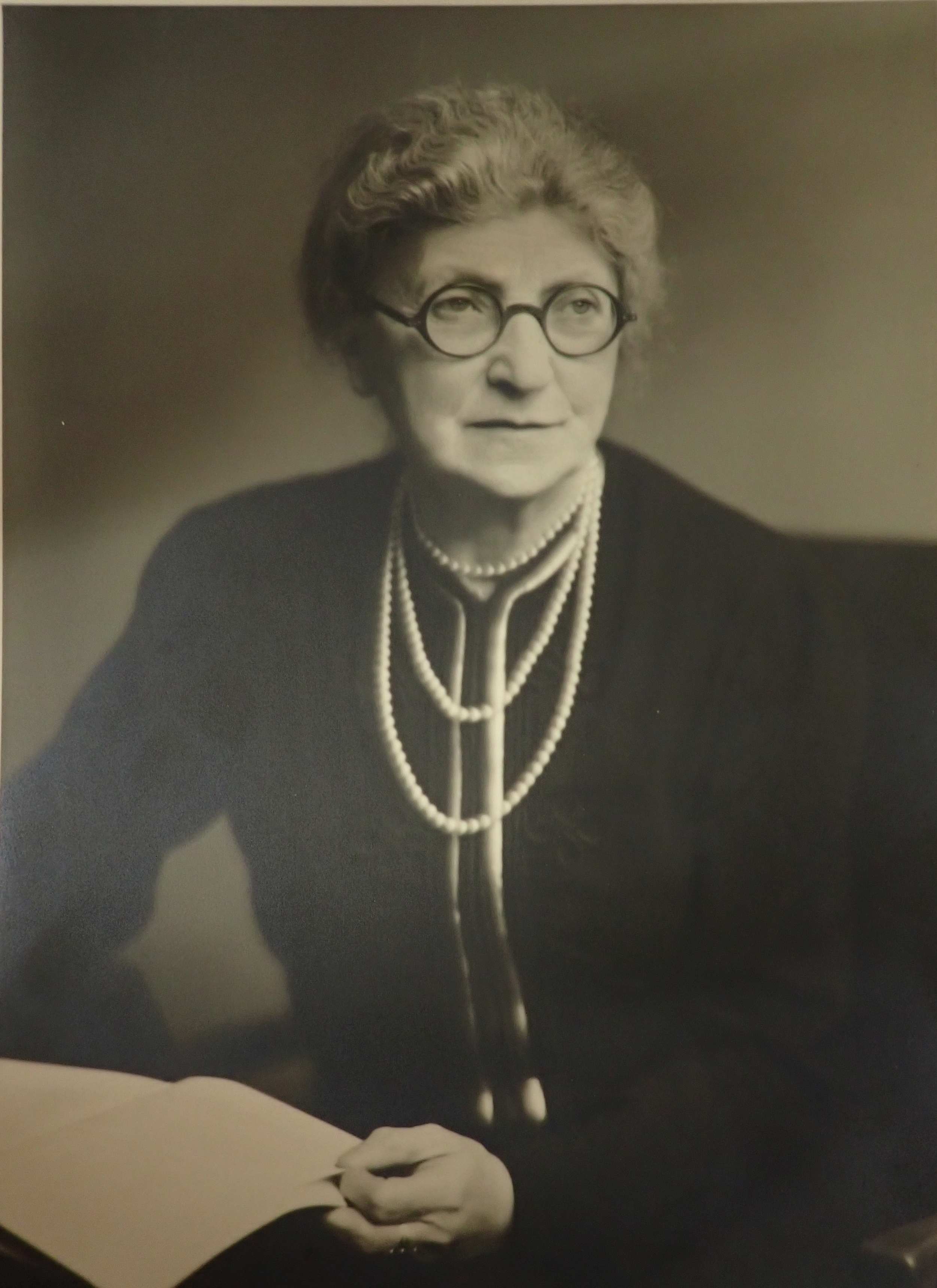
Muriel Robertson, student and researcher in Zoology, 1903 - 1907
Credit: ©University of Glasgow
Sheina Marshall OBE, FRSE FRS (1896 – 1977)
Sheina Marshall entered the University of Glasgow in 1914 to study zoology, botany and physiology. She graduated with an Honours degree in 1919 , her studies having been interrupted over the WW1 years. In receipt of a Carnegie fellowship, she worked with Graham Kerr until 1922, when, with his support she took up a post at the Marine Biology Station at Millport, Isle of Cumbrae where she led the majority of her successful scientific career. She was a leading marine biologist specialising in the study of plankton, and in the copepod Calanus in particular. In 1928 she joined the pioneering scientific expedition to the Great Barrier Reef, led by Sir Maurice Yonge. In 1949, she became one of the first women to be elected FRSE.

Sheina Macalister Marshall, student and researcher in Zoology, 1914 – 1922. Photo by Bassano Ltd. Half-plate film negative, 25 April 1963. Purchased 2004. NPG x171905.
Used with kind permission of the National Portrait Gallery , London
Technical staff
This caricature by O.H. Mavor features Graham Kerr as its main subject but the two characters in the background are nameless. However a personal account of the ‘Early Days in the Department’ by Agnes ‘Nora’ Miller, former staff member, part of an pamphlet produced to celebrate Zoology’s 50 year anniversary, offers clues to their identity. Miss Miller writes:
‘…the tall thin figure of Brannigan – he was an ex-Life Guardsman – was a familiar sight to all first year students as he brought in a glass of water a few minutes before the Professor entered to give the lecture……Brannigan combined many duties….all of the work of preparation for the large practical class was carried through by him…he kept a firm check on the register of attendance…he guarded the Professor from unsuitable callers…'
'Jamieson was the opposite of Brannigan in almost every way….he was very bent and small, and cared not at all about his appearance…he was a well-read man…and above all he was the most skilled section cutter of his time. He had been employed at Edinburgh University…and [eventually] met Graham Kerr when the latter was a medical student. When Professor Kerr came to Glasgow he had so much Lepidosiren material to work up that he began to look for Jamieson who seemed to have disappeared…he was located and set to work. The University Court did not agree to pay this technician so the Professor paid him four pounds a week for 10 years [until the matter was resolved]..The two personalities never agreed…the one bond that held them was their complete loyalty to their chief.’
From the physical descriptions above, it seems reasonable to assume the tall and small figures in the drawing are Brannigan and Jamieson, immortalised by Mavor. Osborne Henry Mavor also known as James Bridie, playwright and founder of The Citizens Theatre, was one of Scotland leading cultural figures. However, he started life as a medical student, graduating M.B. Ch.B in 1913 and would have been taught by Graham Kerr and his staff. His cartoons of University academics were published only in the Glasgow University Magazine to which he had been a contributor from 1906 – 1913.
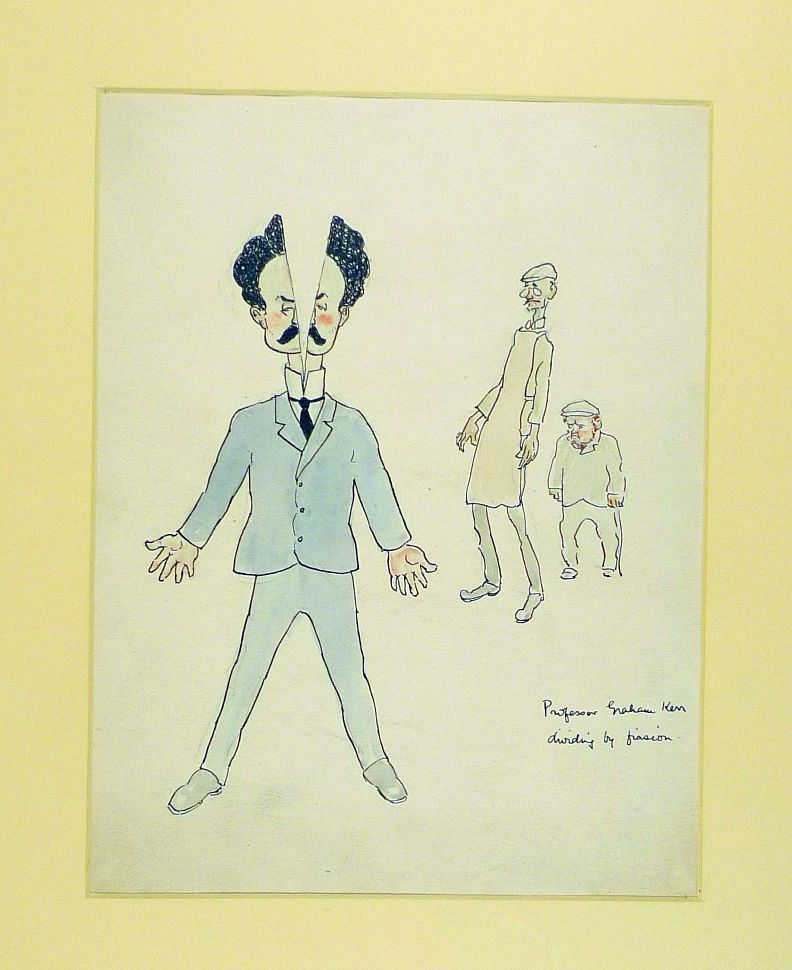
O.H. Mavor caricature of John Graham Kerr
Credit: Glasgow University Magazine 1906 – 1913

